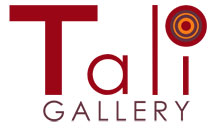THE NATURE OF ABORIGINAL ART
Aboriginal Paintings, even those which look very abstract, usually relate to an aspect of Survival and passing down crucial information to the next generation.
Artists need permission to tell traditional stories that convey important cultural information,versus simply painting whatever they please.
Every region has different stories and very often, the artists use different materials and techniques.
The artwork reveals a strict social structure and a highly advanced civilisation with a keen knowledge of the world around them, their country and astronomy.
It also indicates that Aboriginal people were the world’s first scientists with keen knowledge of bush medicine, astronomy, weather forecasting and other facets of how the world works.
It shows a different skill set to traditional Anglo Saxon/Western culture and is a sophisticated and extremely knowledgeable culture in its own right.
In a British Museum exhibition in 2015, not only was Aboriginal society heralded as the oldest living continuing culture in the world, but also one of the greatest!
This descriptor is clearly evident from an understanding of the art we are fortunate to have access to today.
SOME TRADITIONAL ABORIGINAL PAINTING SUBJECTS
Aboriginal People often depict Bush foods or ‘tucker’ in their Artwork, including:
- plants such as bush tomato, bush orange, bush banana, bush plums and quandong
– vegetable and other roots such as the bush yam, and the Waterlily root which are roasted on a fire
– seeds from grasses, mulga and wattle tree which are ground using stones to make a type of flat bread in a fire
– insects such as honey ants (Central Desert) or green ants (Top End) as well as caterpillars and Witchetty  and other types of Grubs found in and under various tree species
– honey from native bees (which do not sting but produce limited quantities of honey) and nectar from flowers such as bottle brush and banksia
– animals such as kangaroo, emus, wallaby, possums, echidna, snakes and lizards (perente)
– coastal groups or those with access to rivers, and island dwellers also depict various fish or sea creatures such as Dugong, Turtles, Whales and Sharks, as well as edible water plants such as Waterlilies.
Water is also an important subject of paintings
– essential for survival and scarce in the desert and some other regions
– water can be found in claypans or soakages, in and under certain trees, and in deep waterholes and in springs and of course, in some areas in rivers and lakes.
Knowledge of bush medicine is another painting theme
– a Walpiri story, for instance, tells of a vine that climbs around tree trunks and branches, which releases analgesic properties when crushed and which can be used as a tourniquet for a headache
– the stem of the Waterlily is used for its medicinal qualities in the Kimberley and the Top End
– desert dwellers use the Kurrajong leaf as a tea for colds and flu, and pound it with animal fats rich in Vitamin E to make a poultice for wounds and ulcers
– the CSIRO has a study program of various Aboriginal traditional medicines.
Ancestral Travels and Sacred Sites
Some paintings follow Song lines or Dreaming tracks of totemic ancestors – sometimes people, sometimes creatures from the Dreamtime, and these hold important knowledge which enables navigation of the land, explains interpersonal relationships and relationships with the land – and often relates to knowledge of astronomy as well as containing crucial tribal law.
Dreaming tracks traverse the entirety of Australia (see the section on Song Lines).
A painting relating to a sacred site by Kimberley artist, Lena Nyadbi, has been transposed onto the rooftop of the Muse du Quai Branley in Paris – and can only be seen from the Eiffel Tower and from Space.
Sacred Sites are of equivalent importance and seriousness to Aboriginal people as Nazareth or Bethlehem to those of the Christian faith.
Many stories are analogies and provide moral tales such as punishment being given for greed and positive outcomes deriving from co-operation and working together.
Topographical painting, typical of desert artists, shows an acute knowledge of country and once such collaborative group painting has been presented as evidence in an Australian Court of Law to prove (and win) Native Title.
Creation and Spirit Figures
The Wandjina is the creator of life to one community in the Kimberley and is a particular subject of their art.  This community also depicts the Gwion Gwion (also known as the Bradshaw Figures), the spirits of the first people.
Spirit figures such as the Mimih and Wyarra are depicted in art in Arnhem Land.
